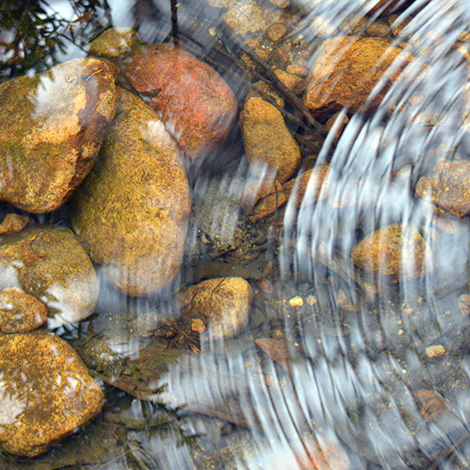Naturally formed lakes and ponds are generally fed by consistent water sources like rivers or underground springs. Springs infuse ponds with clean, cool water year-round, improving the overall water quality for fish and other aquatic creatures. Find out how a spring-fed pond works and learn if you can build a spring-fed pond on your property in this comprehensive guide.
What is a Spring-Fed Pond?
Spring-fed ponds are bodies of water constantly replenished by natural underground water sources. The spring feeding such a pond might be a high groundwater table or a pressurized artesian aquifer deep beneath the surface.
Watershed ponds are another type of self-sustaining waterbody fed by aboveground tributaries like streams, rivers, or seasonal creeks. Spring-fed ponds are often cleaner, clearer, and cooler than watershed ponds.
A non-geothermal spring maintains a stable, relatively cool temperature all year, unphased by seasonal fluctuations in air temperature. Nestled underground, springs are also less prone to pollution from agricultural runoff than streams and rivers.
Does a Spring-Fed Pond Need Aeration
All ponds benefit from adding an aeration system, as aeration serves a few vital roles in keeping ponds balanced and habitable. Diffused pond aerators oxygenate and circulate the water column, eliminating thermal stratification—layers of cold, low-oxygen water trapped at the bottom.
A natural spring can help circulate the water a small amount, but it does little to infuse oxygen into a pond. Without a source of aeration, even a spring-fed pond can develop “dead zones” that are uninhabitable for fish and other aquatic life.
How to Tell if a Pond is Spring Fed
Have you ever swam in a pond or lake and stumbled into a significantly colder patch of water submerged near the bottom? Many assume this is evidence of a spring-fed pond, but it is usually just a telltale sign of the thermocline layer of stratification.
The only reliable way to determine if your pond is fed by a natural spring is to monitor the water level throughout the year. If it remains fairly consistent despite droughts and never needs to be refilled, you might have a spring keeping your pond full.
It is significantly easier to identify a natural spring before building a pond. Look for marshy patches of vegetation that grow denser and greener than their surroundings, and listen closely for the trickling sound of water.
Digging Out a Natural Spring
Are you wondering what to do with a natural spring on your property? Grab a shovel and dig! Digging out a natural spring to form a spring-fed pond basin will provide countless benefits for you and your surroundings.
Spring water is often pure and clean, making it a suitable drinking source for native wildlife. Your new pond will soon flourish into a diverse ecosystem that improves your local environment. As a bonus, blue spaces like ponds are also proven to support relaxation and overall life satisfaction, transforming your backyard into a tranquil oasis.
Learn More About Backyard Ponds
Get insights on caring for a mature pond or building one from scratch from our pond experts. Contact us online or by phone at 866-POND-HELP for personalized tips and advice.
Ready to read more? Check out these related articles:
Winter Fish Kill: Signs & Solutions
How to Tell if a Pond is Properly Aerated
Last Updated: December 31, 2024
